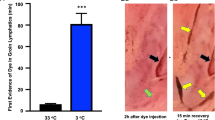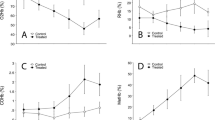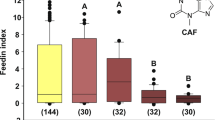Abstract
THE loggerhead turtle, Caretta caretta, is reported to eat the Portuguese man-of-war, Physalia physalis 1–3. Where Physalia are assembled in windrows, loggerheads are often seen at the surface with eyes closed, eating this siphonophore. Velella, an allied species, has also been identified from stomach contents of a turtle which was identified as a loggerhead4. Physalia is equipped with a singularly potent toxin5. This is contained in nematocysts which can penetrate a rubber glove and presumably even the chitinous exoskeleton of a crab's leg. As Barbour pointed out, the dense impenetrable skin of the face and jaws might protect a turtle from some of the obvious hazards of such a feast. However, since tentacles of active colonies have been observed to cling tightly to the skin, gloves, glass containers and even to the polished steel surface of a pair of scissors, it is difficult to explain the ability of the turtle to swallow, much less to digest and survive this meal. We believe that the acid of the stomach contents would inactivate the nematocyst and its contained venom virtually upon contact. The unconcern of the adult turtle with the toxic effects of the nematocysts might be due to the presence of protective antibodies in the blood acquired by contact with Physalia early in life. It is the object of this communication to report the results of experiments designed to test this hypothesis.
This is a preview of subscription content, access via your institution
Access options
Subscribe to this journal
Receive 51 print issues and online access
$199.00 per year
only $3.90 per issue
Buy this article
- Purchase on Springer Link
- Instant access to full article PDF
Prices may be subject to local taxes which are calculated during checkout
Similar content being viewed by others
References
Babcock, H. L., Proc. Zool. Soc. Lond., A, 107, 595 (1937).
Barbour, T., “Naturalist at Large” (Little, Brown and Co., Boston, 1943).
Carr, A. F., “Handbook of Turtles” (Cornell University Press, Ithaca, New York, 1952).
Murphy, R. C., Copeia, No. 2 (1914).
Lane, C. E., and Eleanor Dodge, Biol. Bull., 115, 219 (1958).
Kunitz, M. J., J. Gen. Physiol., 35, 423 (1952).
Phisalix, Mme. M., Bull. Mus. Nat. Hist. Paris, 6, 166 (1934).
Author information
Authors and Affiliations
Rights and permissions
About this article
Cite this article
DODGE WANGERSKY, E., LANE, C. Interaction between the Plasma of the Loggerhead Turtle and Toxin of the Portuguese Man-of-War. Nature 185, 330–331 (1960). https://doi.org/10.1038/185330b0
Issue Date:
DOI: https://doi.org/10.1038/185330b0
Comments
By submitting a comment you agree to abide by our Terms and Community Guidelines. If you find something abusive or that does not comply with our terms or guidelines please flag it as inappropriate.



